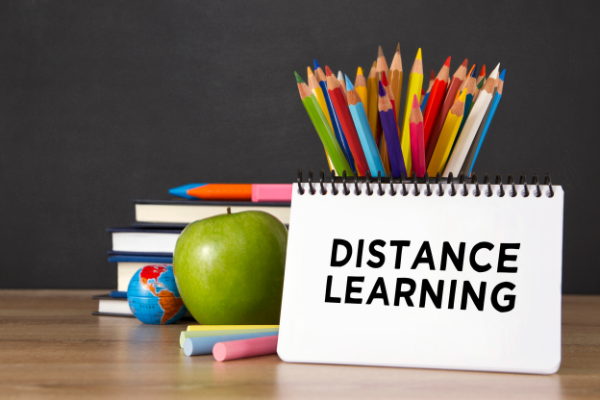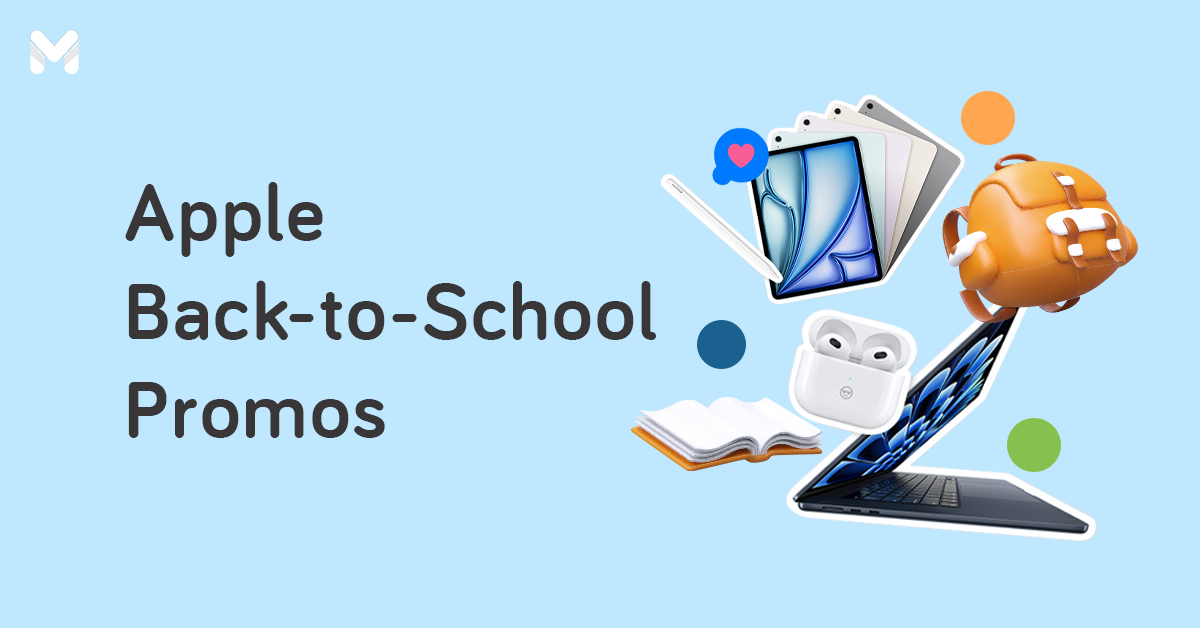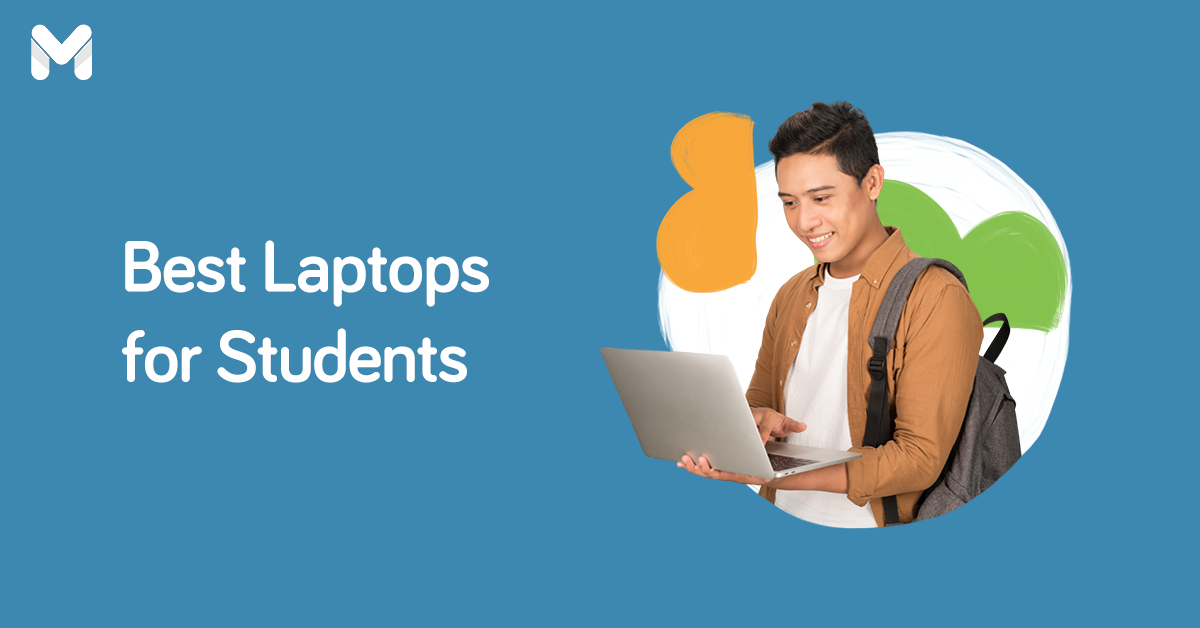During the pandemic, the demand for flexible learning opportunities introduced students and their parents to distance learning in the Philippines. While some students thrived under this method of education, others struggled to cope. Now that most schools in the country have resumed in-person or hybrid classes, some parents still have mixed emotions and wonder what the best option is for their children.
Should You Send Your Kids Back to School?
With face-to-face classes, a sense of normalcy is restored. But while COVID-19 is no longer considered a public health emergency in the Philippines, the threat is nonetheless still here. Some parents are reluctant to let their children spend so much time outside, let alone spend whole days in packed rooms with other kids.
The current issues in education in the Philippines are nothing to brush off. As a parent, you now have worries beyond figuring out how to finance your children’s education. You also have to think about the best education method for them—in-person or virtual learning.
If you’re not keen to send your kids back to school, read up on distance learning in the Philippines, its pros and cons, and the resources available. You can then decide if it’s the best education option for your kids in the new normal.
What is Distance Learning in the Philippines?

Distance learning, also known as correspondence education, is a method of education where the teacher and student are separated geographically.[1] There’s no interaction between students and little face-to-face interaction between students and their teachers.
The typical setup of distance learning in the Philippines involves modular learning. As the name suggests, the meaning of modular learning is a form of education with self-learning modules that lets students learn at their own pace.[2] The advantages and disadvantages of modular learning in the Philippines are discussed further down below.
In a distance learning format, students may get their learning materials or modules via snail mail, e-mail, or the internet. Learning assessments can be in the form of written exams or assignments, performance tasks, or portfolios.
Students can also ask for support through the telephone, snail mail, e-mail, or instant messaging applications used by their teachers.
Distance learning initially targeted non-traditional learners, such as full-time employees or those who couldn’t physically attend classroom lectures. But now, distance education caters to almost everyone.
The effects of distance learning on students in the Philippines are polarizing—some claim this method leaves students behind because of poor implementation and others say it’s the best way forward to the future of education.
Related reading: Where to Buy Affordable School Supplies (Plus Money-Saving Tips)
Distance Learning vs. Online Learning vs. Homeschooling
Distance learning is the “traditional” self-study course.[3] Teachers mail learning resources, or students may get them online. Students also have to complete the tasks based on the schedules assigned.
While students and teachers can use the internet to receive and submit assignments, they don’t interact via online lectures or forums to discuss the learning materials.
Some people assume that distance learning and online learning are the same. While it’s an understandable confusion, the definition of online learning differs slightly from that of distance learning. Also, online learning is not to be confused with virtual learning and e-learning, which are similar but not quite the same.
So, what is an online class or online learning? It’s a method of learning that heavily uses the internet as a tool for education. There’s a physical distance between students and teachers, but they can interact during virtual lectures and other online assessments.
Classes are often scheduled at specific times, so students need to be online to attend virtual lectures. In this setup, students can also discuss the lectures or ask their teachers questions in real time. Additionally, they can interact with fellow students via online platforms.
The effect of online classes on students varies. Online learning has positive and negative points, depending on which lens you’re looking through.
Finally, there’s homeschooling, which may sound almost the same as distance and online learning but is very different. In other countries, homeschooling allows parents to take full responsibility for their child’s learning journey. Although guided by an accredited school, parents can take part in developing the curriculum that suits their child’s needs.
🆚 Main Differences Between Distance Learning, Online Learning, and Homeschooling
-3.png?width=600&height=400&name=Pics%20for%20blog%20(16)-3.png)
You may have read many articles about online learning in the Philippines. However, if you’re still confused about what differentiates them from distance learning and homeschooling, here are three main differences to note:
📚 Location
Distance learning and online learning mainly differ in location. In distance learning, the teacher and the learner are physically apart due to location.
On the other hand, the learner and the educator can be physically near each other with online learning. For example, there can be online learning even when the teacher and the student are inside the classroom at the same time.
Homeschooling is like distance learning. The only difference is that parents are involved in the assessment and development of lessons, which gives them the responsibility to interact with teachers occasionally.
📚 Interaction
Online learning is part of a blended learning technique[4] that uses both digital and traditional modes of classroom interaction.
On the other hand, distance learning and homeschooling don’t require physical interaction. The teacher and the learner interact through virtual communication platforms.
📚 Intention
Distance learning and homeschooling are not variations of teaching styles. They are in place to provide virtual or digital teaching-and-learning interaction.
Online learning is conducted to provide different learning methods for different kinds of learners.
| Features | Distance Learning | Online Learning | Homeschooling |
|---|---|---|---|
| Parents need to actively help students accomplish their school tasks at home. | ❌ | ❌ | ✔️ |
| Students are required to attend in-school classes occasionally. | ❌ | ✔️ | ❌ |
| Students learn through modules alone. | ✔️ | ❌ | ✔️ |
| Students and teachers never interact physically. | ✔️ | ❌ | ✔️ |
| Parents provide gadgets and tools. | ✔️ | ❌ | ❌ |
| The teacher is the main educator. | ✔️ | ✔️ | ❌ |
| It uses traditional teaching methods. | ❌ | ✔️ | ❌ |
| It takes place only at home. | ✔️ | ❌ | ✔️ |
| It can take place inside the classroom. | ❌ | ✔️ | ❌ |
Which Learning Method is the Best for My Child?
Deciding which learning method is best for your child can be challenging for parents. For one, you’re not only considering the costs of education but also potential risks whenever they go outside.
Here are a few tips to help you make the right decision regarding your child’s learning journey.
Choose distance learning if you or your child:
- Prefer no in-classroom physical interactions
- Want the teacher to take full responsibility for educating your kids
- Want to monitor your child’s learning routine regularly
- Cannot physically attend classroom meetings
- Will not require laboratory or school equipment use
Choose online learning if you:
- Want your child to experience in-classroom interaction
- Prefer a mix of digital and traditional modes of teaching
- Want blended learning techniques instead of learning solely through paper modules
Choose to homeschool if you:
- Have the time and commitment to be your child’s primary teacher
- Want to take part in developing your child’s curriculum or learning areas
- Don’t want your child to attend in-classroom discussions
Advantages and Disadvantages of Distance Learning in the Philippines
-3.png?width=600&height=400&name=Pics%20for%20blog%20(17)-3.png)
Distance learning is not for everyone, especially those who like routines and schedules. To better understand whether this education method is for your child, check out these pros and cons:
Advantages of Distance Learning in the Philippines
People can argue about the effectiveness of distance learning in the Philippines. It’s a contentious matter, and you’ll get varying opinions depending on who you ask. But the following pros of distance learning are undeniable:
👍 Flexible
Since distance learning entails self-study, learners get flexibility in terms of location. They can study their materials anywhere as long as they submit their assessments on the agreed-upon dates.
👍 Time-Efficient
Distance learning also lets students save time. Once they’re done for the day, they can do other errands or devote time to nurturing other hobbies. They also don’t have to travel and get stuck in traffic to attend classroom lectures.
👍 Cheaper
Sending your kid to school can be quite a financial challenge unless you have an educational plan in the Philippines. With distance learning, you can find programs offered by public schools for free or for a minimal fee. Programs provided by private institutions are also generally cheaper than their traditional counterparts.
👍 Self-Paced
Different people learn in different ways. Your kids can learn at their own pace with distance education. If there are lessons they find difficult to understand, they can spend as much time as they want to study them.
Disadvantages of Distance Learning in the Philippines
The reality is that the impact of distance learning on students in the Philippines is not always good or positive. There are downsides to it that you should also consider:
👎 Minimal Social Interaction
Distance learning offers little interaction between students and teachers. Fellow students may also not be able to communicate at all.
👎 Little Support
Since this approach relies heavily on students’ ability to study independently, it’s challenging to find additional resources for assessments without guidance from a teacher.
👎 Poor Accessibility
Not everyone has gadgets or access to the internet. Learners may also find it difficult to obtain the materials for their courses, especially if they live in remote areas.
👎 Low Self-Motivation
Students may have a hard time finishing their assessments and study materials if they’re the types who need an extra push. It’s also easy to be distracted as the learning environment is not as controlled as a classroom.
Why Distance Learning is the Future of Education
Distance learning is far from perfect, especially in the Philippines, where we lack the proper policies and infrastructure to implement it.
But the potential exists, especially since technology is a growing part of people’s lives. The younger generation is full of digital natives, and it’s just a matter of time before they demand a digital revolution in education.
Before the pandemic, distance learning was an alternative way to learn and get a degree. When the pandemic took away the option of face-to-face classes, there was a dramatic shift in our education system towards remote learning. Since then, distance learning has since then made a case for itself as a viable default option for education.
However, looking at the here and now, there are still many challenges to overcome to make this work. There’s a gaping divide in our digital infrastructure, putting lower-income learners at a disadvantage. We need basic policies like internet and gadget subsidies to create a more equitable environment for online distance learning in the Philippines.
Still, we can’t deny that distance learning will stick around and continue to evolve until we can finally catch up, whether we're ready for it or not.
If you’ve experienced the benefits of this learning method firsthand, you know it’s hard to go back to the traditional way of doing things when there’s a novel way that works in your favor.
Distance learning can unlock better learning experiences that match each individual’s learning style and budget. It also affords learners the freedom to create their learning environment. With distance learning, students can access quality education wherever and whenever they want.
If you already have the means, start gearing up for this new reality so the impending and inevitable transition won’t catch you off-guard.
Distance Learning Programs in the Philippines
Most distance learning courses in the Philippines often cater to learners who want to get a degree but can’t physically attend classroom lectures.
The Department of Education (DepEd) created an Open High School Program (OHSP) in 2011,[5] which made distance learning possible for high school students who want to study at their own pace without attending a traditional classroom.

OHSP provides learning opportunities for students to complete secondary education in a purely distance-learning mode. Currently, some academic institutions like AMA Online Senior High School offer it.
Some institutions offering distance learning programs include the following:
- AMA Online University
- Asian Institute for Distance Education
- Benguet State University
- CAP College Foundation, Inc.
- College of Arts and Technology (CIIT)
- New Era University
- Philippines Women University
- Polytechnic University of the Philippines Open University System
- Saint Pedro Poveda College
- Southville International School and Colleges
- University of the Philippines Open University
- Visayas State University
🏫 Asian Institute for Distance Education
Website: www.aide.edu.ph
Established in 1984, the Asian Institute for Distance Education started offering two-year arts, economics, history, English, political science, and sociology courses.
It now has a Bachelor of Science in Business Administration program in Human Resource Management, Marketing Management, Business Economics, Financial Management, and Operations Management. It also has a Bachelor of Arts program in English and Political Science.
The Asian Institute for Distance Education accepts international students as well.
Read more: 11 Study Abroad Programs for a Global Educational Experience
🏫 College of Arts and Technology (CIIT)
Website: www.ciit.edu.ph/online-distance-learning
Do you see a future in entrepreneurship, technology, or digital arts for your child? CIIT believes in providing virtual education for anyone who wants to pursue their passions and studies.
Its distance learning program offers students manageable study loads and shortened terms, with weekday classes only. Moreover, students have personal coaching sessions with their instructors for further enrichment and guidance.
Aside from senior high school and bachelor's degree programs, CIIT offers specialist courses, summer workshops, boot camps, and corporate training. There are scholarship programs available for deserving students as well.
🏫 Poveda Distance Learning Program
Website: poveda.edu.ph/form-poveda-distance-learning-program
Saint Pedro Poveda College opened in Manila in 1960. Aside from offering regular on-site classes, it has a homeschool program called RISE (Remote, Independent, and Self-Paced Education). This modular distance learning modality is open to grades seven to 10 students that meet specific criteria. It follows the same curriculum as its on-site classes but is self-paced with minimum instruction.
Distance Learning Tools and Resources

Aside from self-motivation, you may need support to maximize your distance learning (or teaching) experience fully. Here are a few tools and resources that can help:
🍎 ABRA
Website: literacy.concordia.ca/en
The platform offers a selection of game-like activities in English (and French!) for early learners, promoting reading comprehension enhancement.
🍎 Adarna House's Eskuwelaro
Website: www.youtube.com/user/adarnahouse
Adarna and Raya School collaborated to bring storytelling and singing sessions for young learners. The videos are posted on Adarna’s YouTube page.
🍎 AHA! Learning Center
Website: www.facebook.com/ahalearning
Resources via AHA! are accessible to most Filipinos. You can get modules on creative writing, devotions, and wellness via Google Docs or Facebook Messenger.
🍎 Aperture Education
Website: info.apertureed.com/archived-resources
This platform offers free resources in social learning (SEL) growth strategies for parents and teachers. The materials also cover support for continued learning.
🍎 BrainPop
Website: www.brainpop.com
BrainPop encourages teachers and students to be more involved in learning. It offers free access to Math, Science, Humanity, English, and more resources.
🍎 Cell-Ed
Website: www.cell-ed.com
Cell-Ed is an online platform focusing on learner-centered and skills-based education. It also offers offline options for students.
🍎 Common Sense Education
Website: www.commonsense.org
This non-profit organization offers tools and resources. It also provides teachers and parents with tips on transitioning to online and at-home learning.
🍎 DepEd Commons
Website: training.deped.gov.ph/course/index.php?categoryid=49
This educational platform was created to support distance learning in the Philippines. Access online review materials and lessons on the website. You can browse DepEd Commons without additional data charges.
🍎 Discovery Education
Website: www.discoveryeducation.com
Discovery Channel’s online platform offers science, history, and current events resources. It also provides ready-to-use digital lessons and learning resources for educators.
🍎 Knowledge Channel
Website: www.youtube.com/user/knowledgechannelorg/videos
With DepEd's support, the channel launched its Stay at Home, Learn at Home program. You can watch episodes and segments of shows like “Sineskwela,” “Hiraya Manawari,” and “ATBP.” Some episodes are also up on its YouTube channel.
🍎 National Library of the Philippines Online
Website: web.nlp.gov.ph
The country’s national library offers free online access to various scholarly titles. You can access library information and science abstracts through the website.
🍎 Peardeck
Website: www.peardeck.com
If you’re a teacher, use this online platform to create more engaging learning content for your students. It offers various features to make your instructional materials more interactive.
🍎 Philippine E-Journals
Website: ejournals.ph
Philippine E-Journals provides scholarly articles and papers in various disciplines. You can quickly locate abstracts and related articles using the website’s database.
🍎 Scholastic
Website: classroommagazines.scholastic.com/support/learnathome.html
The publishing company launched a free online resource for students, parents, and teachers. You can get various materials for reading lessons on the platform.
🍎 SplashLearn
Website: www.splashlearn.com
With over 8,000 games and printable worksheets for preschool to grade five students, Splashlearn truly makes math and reading fun. It’s an excellent way for kids from two to 11 years old to master reading and math skills. This subscription-based online tool also offers live reading and math classes by certified teachers.
🍎 Twinkl Philippines
Website: www.twinkl.com.ph
Whether inside or outside the classroom, you can access teacher-created teaching, planning, and assessment materials on Twinkl Philippines. This library of educational materials has thousands of resources for teachers, home educators, childminders, and parents that are available anytime. Download academic planners, interactive games, activities, resources, video lessons, and more for your child’s learning.
Subscriptions are available for individuals at ₱149.95 per month.
Tips to Help Children Succeed in Distance Learning
-3.png?width=600&height=400&name=Pics%20for%20blog%20(18)-3.png)
Distance learning may be challenging. Still, you can help your child succeed and even enjoy it if you follow these tips for students in the new normal:
✔️ Provide a Dedicated Space for Learning
Children should have a dedicated space for learning. A quiet learning station for kids can help them avoid distractions and focus on their current tasks.
✔️ Stay in Touch with Their Teachers
Parents should find time to reach out to their kids’ teachers for follow-ups and progress updates. If you have a toddler, you may require more frequent communication with their teachers.
✔️ Be Mindful of Your Child’s Stress Levels
Remember that your child is experiencing stress, too. Lack of time to physically play outdoors or meet up with friends increases your child’s stress or anxiety. Help them by breaking down their tasks and letting them set priorities.
✔️ Monitor the Time Your Children Spend Online
If your kids study at their own pace, try to limit their online time. The ideal screen time for children[7] is summarized below:
- Below two years old – 0 hours (including TV, electronic media, DVDs, computers, and electronic games)
- Two to five years old – less than one hour (homework not included)
- Five to 17 years old – less than two hours (homework not included)
Although these are the ideal screen times experts recommend, parents still have the discretion to control their children’s time online. Depending on their needs, grade level, and activities, you can take charge of your children’s school-life balance.
✔️ Establish a Routine
You should establish a routine regardless of your child’s distance learning schedule. Make sure they get enough sleep, eat their meals on time, and engage in physical activities.
✔️ Be Part of the Learning Process
Although distance learning may not always require parental involvement, ensure you’re still a part of your child’s learning journey. Distance learning in the Philippines is new to everyone, and your participation and interest can help your child quickly adapt.
Final Thoughts
Now that you understand it more clearly, you can judge distance learning in the Philippines based on its merits and decide whether or not it’s the right option for your kid.
The present is an essential factor that should influence your decision, but don’t forget to consider the near future. If you recognize its benefits and can maximize them to your child’s advantage, there’s no reason to pass it up.
Sources:
- [1] Distance Education in the Philippines (Philippines Education)
- [2] Effectiveness of Self-Learning Modules (Rappler, 2021)
- [3] Difference Between Online and Distance Learning (University of Essex Online, 2016)
- [4] What Is Blended Learning? (Applied Educational Systems, 2018)
- [5] DepEd Open High School Program (Inquirer, 2011)
- [6] DepEd’s Distance Learning (Rappler, 2020)
- [7] Screen Time for Kids (OSF Healthcare, 2020)










